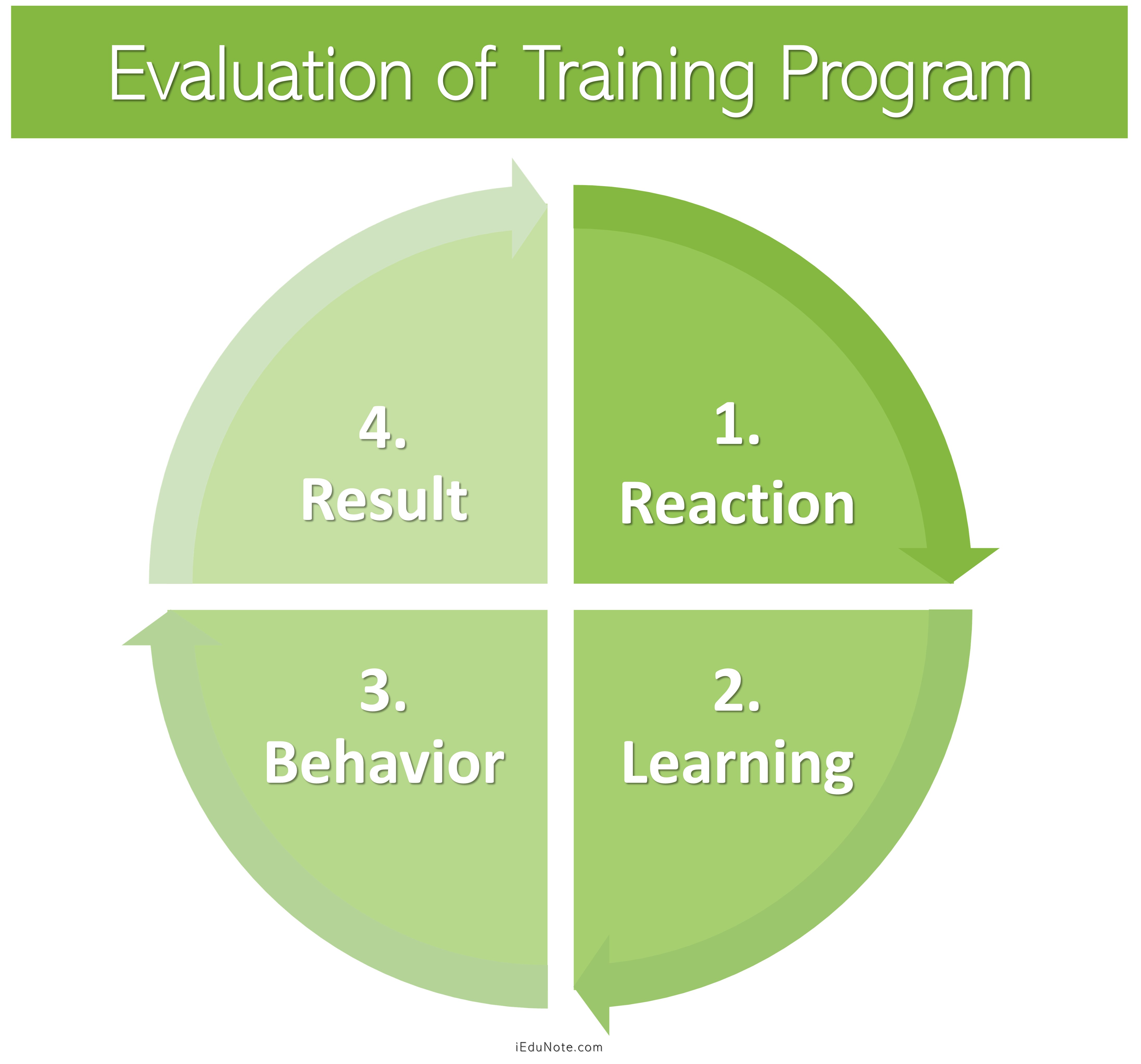Training evaluation refers to the process of collecting the outcomes needed to determine if training is effective. The company constantly evaluates the effectiveness of training programs to find if the money they have invested has been spent properly or not.
Evaluation of Training Programs
According to the basic assumptions of training and evaluation, the success of any training is heavily dependent on its evaluation feedback.
As Harison (1988) mentioned, without evaluation, there cannot be a certainty that a learning event has achieved its objectives, or that even if it has done so, those objectives were themselves worthwhile, or that whatever the success and relevance of learning event, it was carried out in the most cost-effective way.
Therefore, evaluation is an essential part of the training process, which provides continuous support to make it effective. In general, evaluation has two purposes.
First, it can be used to assess training effectiveness or determine the value of training. Second, it can be used as a training aid.
To make training programs effective, an evaluation must be undertaken throughout all stages of the training cycle.
Brambly (1986) argued that if training is to be a systematic procedure, then evaluation is an integral part of the training cycle.
Evaluation of each stage of the training cycle is not only a matter of routine work; it has the necessity and importance to fulfill the aims and objectives of a training program.
The evaluation methods may vary depending on the length, objectives, and contents of the training program. Some of the common methods of evaluation are:
- Evaluation by using questionnaires
- Marks and grades in the examination
- Survey/follow-up/research
- Interview or discussions with the incumbent
- Pre or posttest
- Behavior observation.
Experience suggests that there are four steps or levels of training evaluation:
- Reaction: How well the participants accepted the training program;
- Learning: What principles, facts, and techniques were learned in training?
- Behavior: What changes in job behavior resulted from the training program?
- Results: What were the programs’ tangible results in reduced costs, improved quality, and improved quantity?
The first two levels are internally oriented and are known as the formative dimension of evaluation. They are conducted during and/ or at the end of the training program.
The key question in this evaluation is: “Did the training operate as originally planned, or do they need improvement?”
The last two are externally oriented and are known as a summative dimension of evaluation.
They are conducted after the trainees are returned to their job, where we are curious to know,” Did the training achieve the outcomes as intended?”
There are three criteria for evaluating training: internal, external, and participant reaction. Most experts argue that using multiple criteria to evaluate training is more effective. One view of a multiple-evaluation system was developed by Kirkpatrick (1998).
Training programs can be evaluated by asking the following questions.
- Has change occurred after training?
- Is the change due to training?
- Is the change positive or negative?
- Will the change continue with every training program?
These 4 questions give the 4 steps of evaluating the training program.
4 Steps of Evaluation Process of Training Program

1. Reaction
Reaction refers to the attitude of employees about the training, whether the employee considers training to be positive or negative. If the reaction is positive, people accept the program, and changes will be possible.
2. Learning
Another method of judging effectiveness is identifying learning levels, i.e., how much the people have learned during the training. This can be found in the trainers’ mark sheet, the report submitted by the employee, and actual performance.
3. Behavior
The HR department needs to understand the employees’ behavior and the effectiveness of training. The behavioral change can be seen in how the person interacts with juniors, peer groups, and seniors.
They mark the behavior change and inform the HR department of the training program’s success.
4. Result
The employee’s monetary results also determine the effectiveness of the training program, i.e., employee success in handling the project, the group performance before and after training, etc.
Why Should Training Programs Be Evaluated?
The main reason for evaluating the training program is to determine whether they accomplish specific training objectives that correct performance deficiencies.
A second reason for evaluation is to ensure that any changes in trainees’ capabilities are due to the training program and not other conditions.
Third reason: Training programs should be evaluated to determine their cost-effectiveness.
Evaluation is useful to explain program failure should occur. The credibility of training and development is greatly enhanced when it is proved that the organization has benefited tangibly from it.
If a specific performance factor can measure the trainees’ performance after the training can be compared with the objectives of the training program. If the training objectives have been met, then the training has been successful.
For example, a training objective could be to train ten people to type at least fifty words per minute with less than a 1 percent error rate.
In this case, evaluating the training program’s success would involve testing the typing skills of all trainees both before and after the training. If the objective were found to have been met, the program would be evaluated as having been successful.